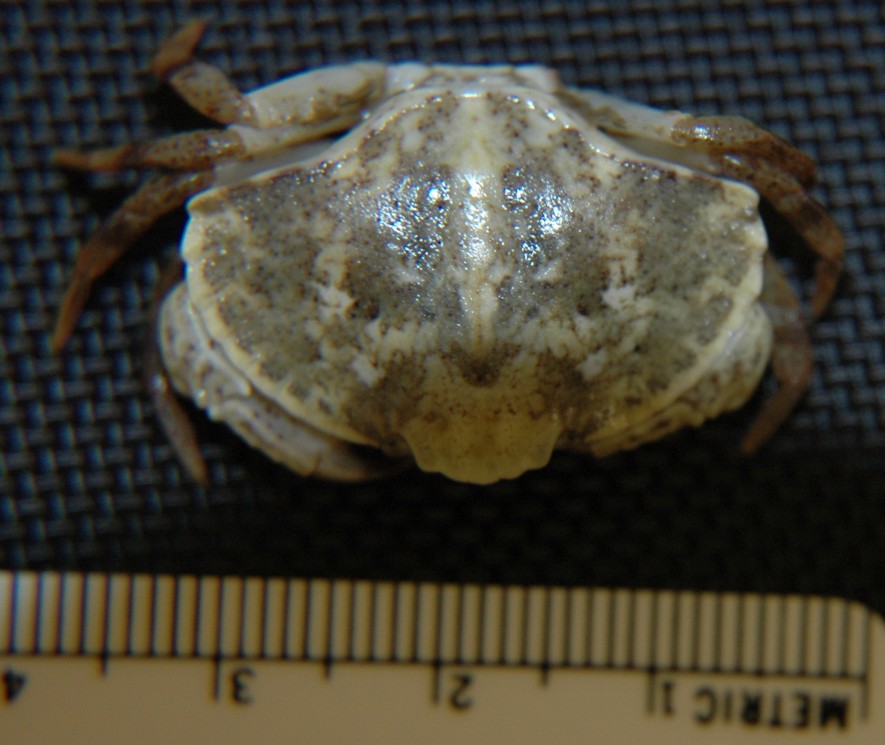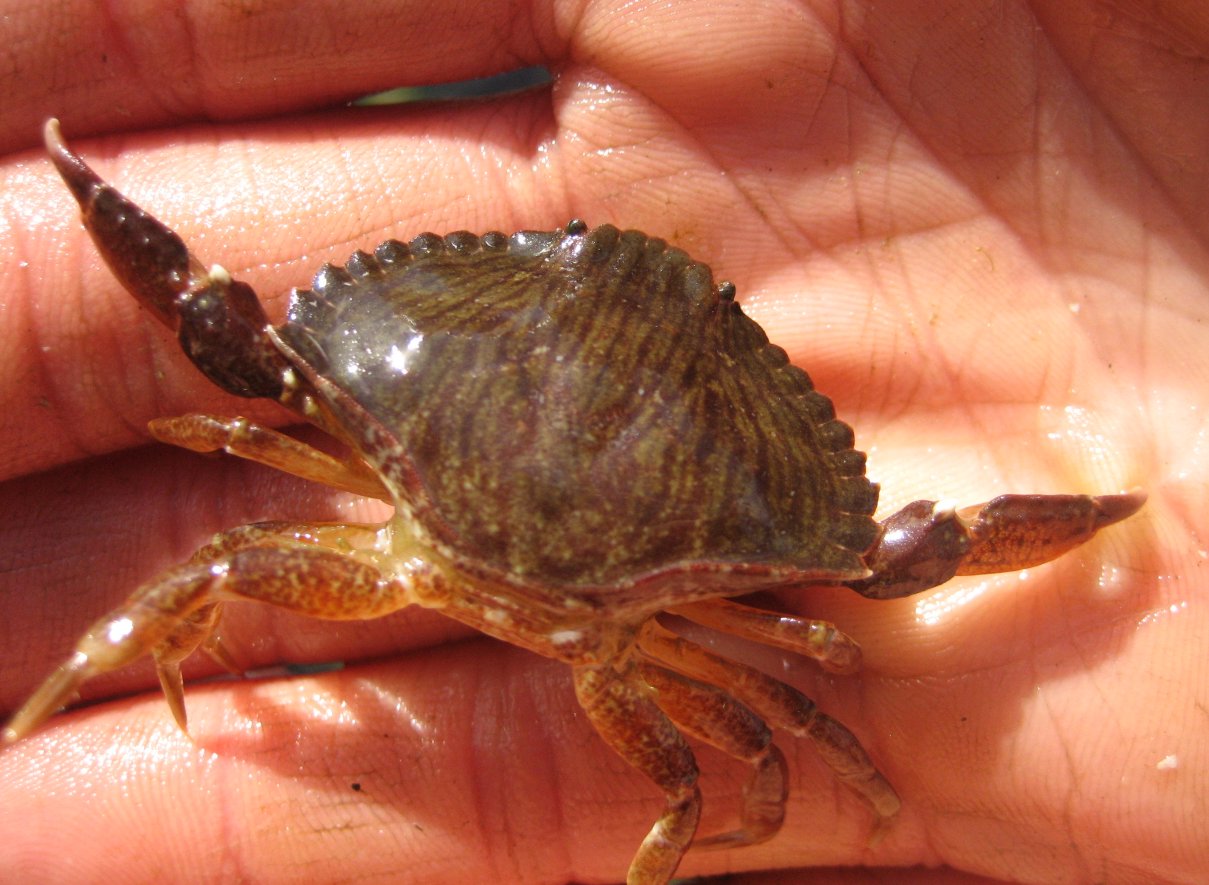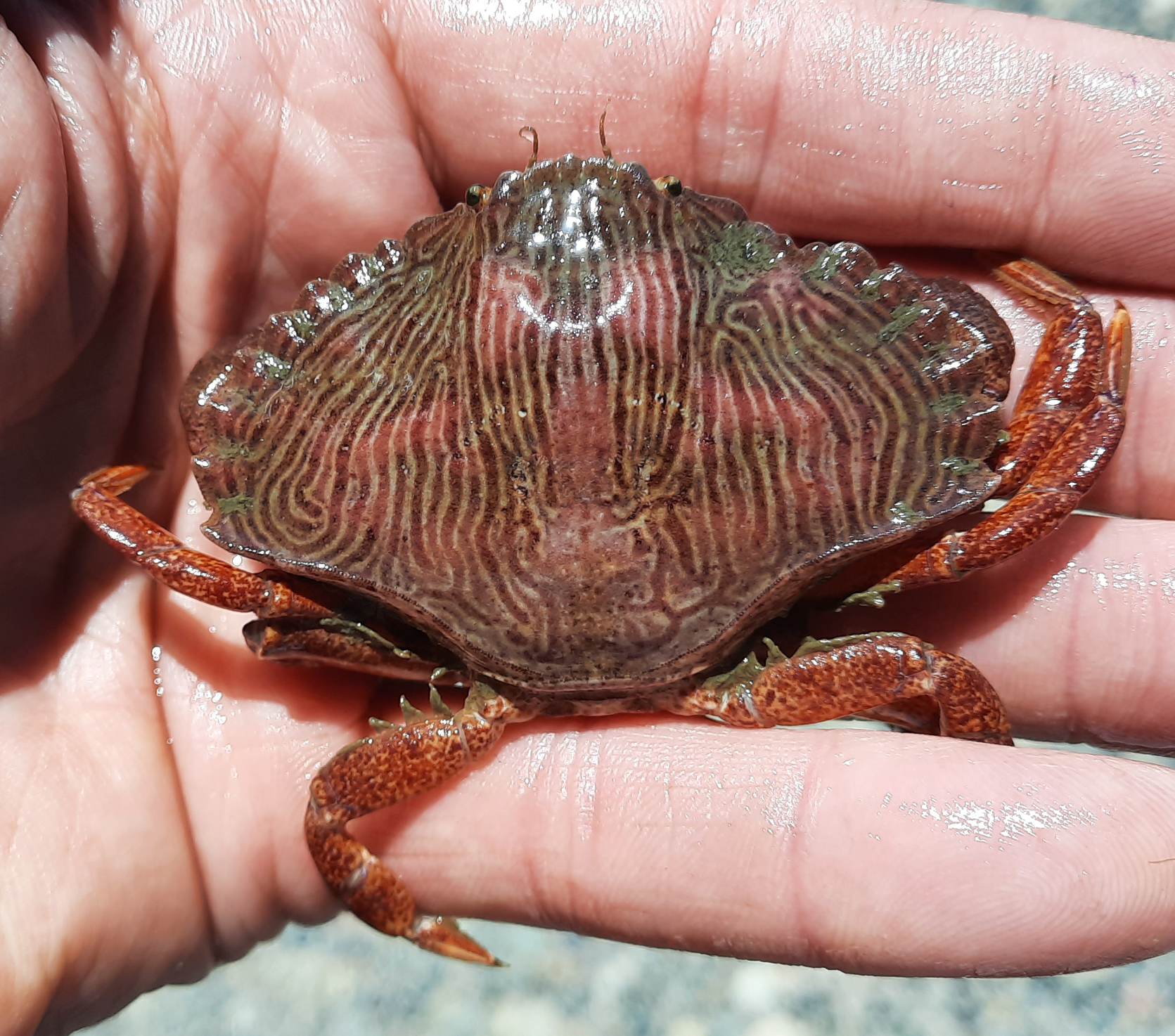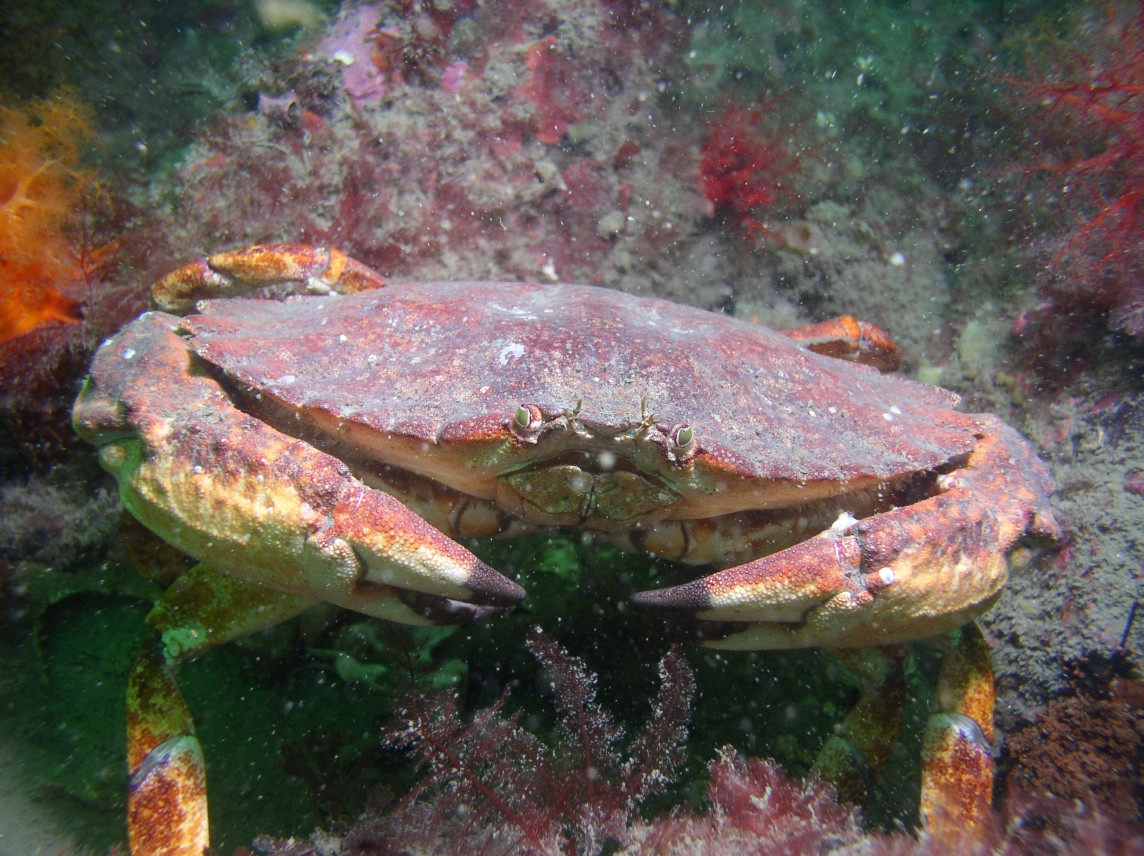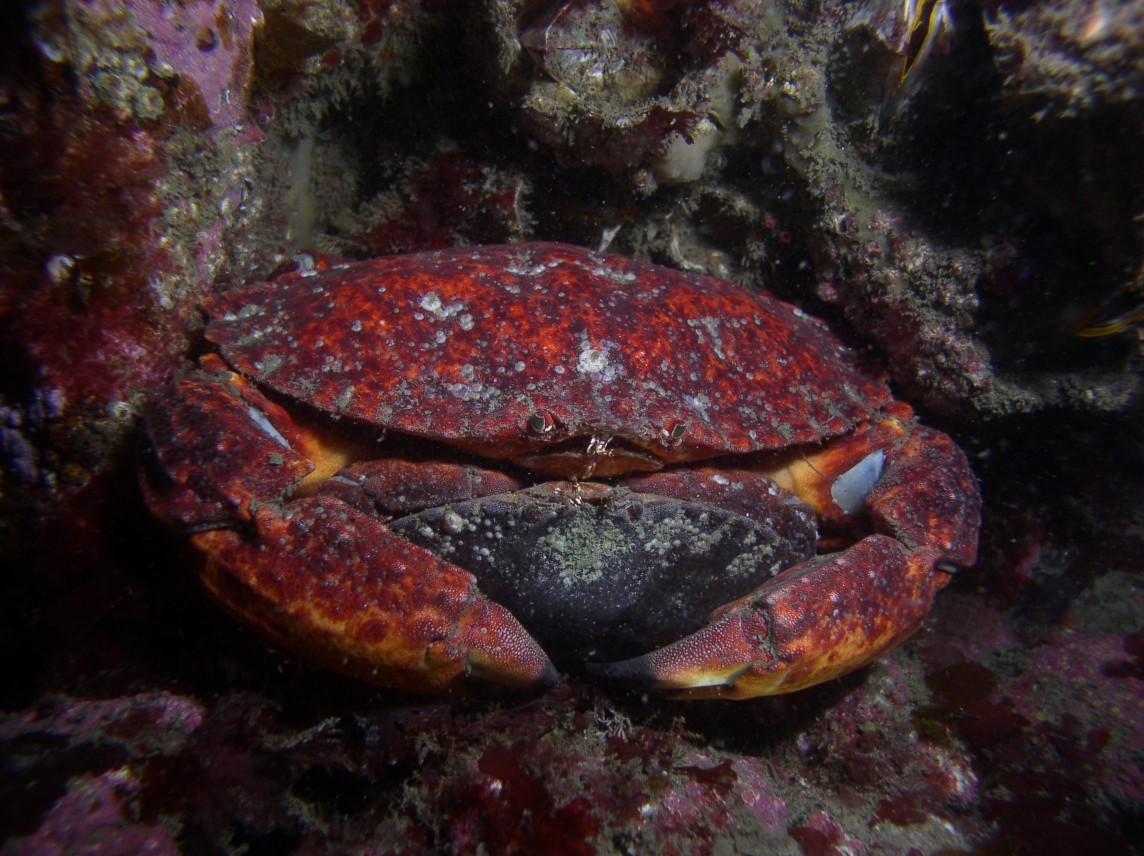Cancer productus Randall, 1839Common name(s): Red rock crab, Red crab, Red cancer crab |
|
| Synonyms: Platycarcinus productus, Cancer perlatus | 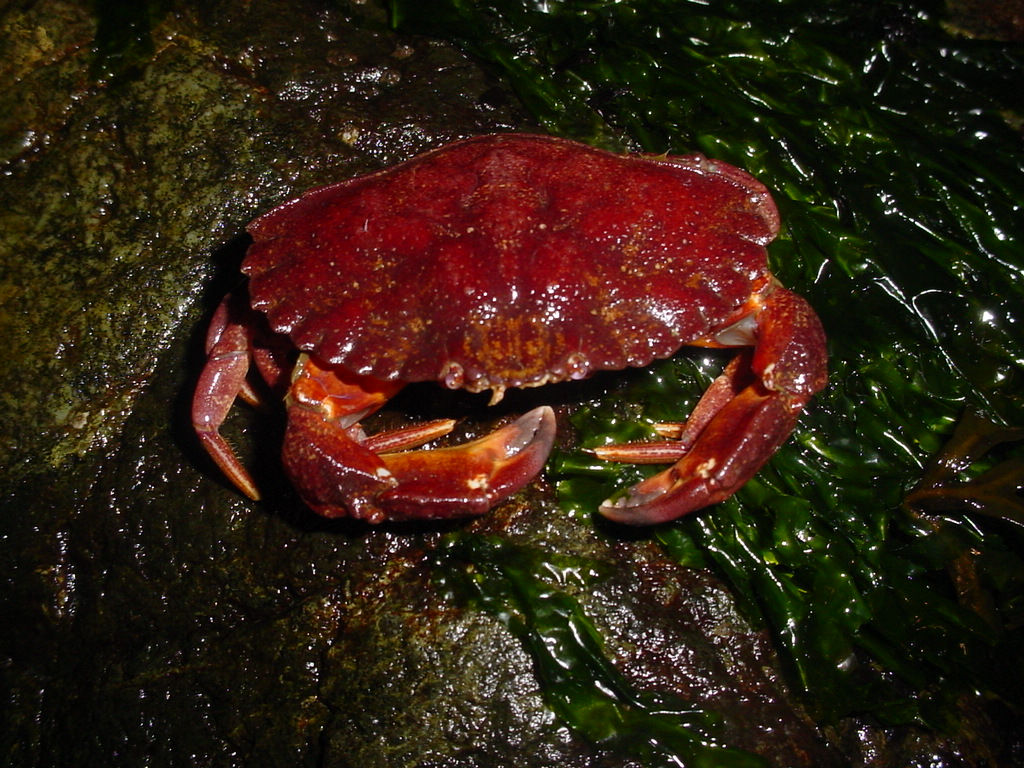 |
| Phylum Arthropoda
Subphylum Crustacea Class Malacostraca Subclass Eumalacostraca Superorder Eucarida Order Decapoda Suborder Pleocyemata Infraorder Brachyura Superfamily Cancroidea Family Cancridae |
|
| Cancer productus, about 12 cm carapace width, at Sares Head | |
| (Photo by: Dave Cowles September 2005) | |
How to Distinguish from
Similar Species:
The other large, common cancer crab species in the Rosario area is C.
magister, which does not have a dark tip to the
dactyl of the chela,
and its carapace is widest at the 10th and last lateral
tooth. C.
antennarius has red spots on the underside of the carapace.
Note: Species formerly in genus Cancer have been recently
subdivided into several genera (Ng
et al., 2008; Schweitzer
and Feldmann, 2010). Of our local genera, Cancer, Romaleon,
and Metacarcinus
have a carapace wider than long plus only scattered setae on the
carapace margins and legs while Glebocarcinus
has a carapace of approximately equal length and width, often with
granular regions and with setae along the edges; and setae on the outer
surface of the chela as well as on the legs. Metacarcinus
can be distinguished from Cancer
because Metacarcinus
has anterolateral carapace teeth which are distinct and sharp plus the
male has a rounded tip to the telson, while Cancer
has anterolateral carapace teeth which are low and lobed, separated by
deep fissures plus the male has a sharply pointed telson (Schram
and Ng, 2012). Romaleon
can be distinguished from Cancer
and Metacarcinus
because it has a distinct tooth on the anterior third of the
posterolateral margin of the carapace while the other two genera do
not.
Geographical Range: Alaska to San Diego
Depth Range: Low intertidal to 90 m
Habitat: Rocky and soft bottoms. Most common around rocks. Often found half-buried in sand under rocks during the day; more active at night.
Biology/Natural History: Predators include sand and kelp bass and sculpin (on juveniles) and seabirds such as gulls and pigeon guillemots. Prey include barnacles and smaller crabs, amphipods, sea cucumbers, polychaetes, many other intertidal invertebrates, as well as dead fish. At least 42 prey species have been noted. Are an important threat to commercial oyster beds. Crabs raised on thick-shelled species such as Mytilus californianus developed even stronger claws. Mating occurs in summer after a female has molted. Males will often guard a female who is preparing to molt, by holding her under his abdomen. This may last for several weeks until she molts. He then guards her until her exoskeleton hardens again. Gravid females may be found from October to June. Females may carry from 172,000 to 597,000 eggs on the pleopods of the abdomen. Males overwinter in shallow areas, while females seem to overwinter in deeper water. Red rock crabs cannot osmoregulate and so are not found in areas of low salinity. Near Vancouver Island, adults have more epibionts than do juveniles (McGraw, 2006). Common epibionts include barnacles (especially Balanus crenatus) on the dorsal surface, green, red, and brown algae (especially on the antennae), tube-dwelling polychaetes (mainly on the ventral surfaces), hydrozoans (mainly on ventral surfaces and limbs), bryozoans (especially Membranipora membranacea) on any region of the carapace. A few have sponge, tunicate, or mollusk epibionts.
Dudas et al. (2005) found that the common local cancer crabs Metacarcinus magister (Dungeness crab) and Cancer productus preferred the thin-shelled introduced varnish clam Nuttallia obscurata to the thicker-shelled clams Leukoma staminea and Venerupis philippinarum if access to all was equally easy. However, Nuttallia obscurata typically lives deeper in the sediment than do Leukoma staminea or Venerupis philippinarum. If they had to dig for them, Metacarcinus magister still ate more Nuttallia obscurata than it did of the other clam species, but C. productus' preference switched to Leukoma staminea and Venerupis philippinarum. Jensen (2024) also reported observations of C. productus capturing and eating fish.
| Return to: | |||
| Main Page | Alphabetic Index | Systematic Index | Glossary |
References:
Dichotomous Keys:Coffin, 1952
Flora and Fairbanks, 1966
Hart, 1982
Kozloff 1987, 1996
Smith and Carlton, 1975
Wicksten, 2009
General References:
Brusca
and Brusca, 1978
Gotshall,
1994
Gotshall
and Laurent, 1979
Harbo,
1999
Hinton,
1987
Jensen,
1995
Johnson
and Snook, 1955
Kozloff,
1993
McConnaughey
and McConnaughey, 1985
Morris
et al., 1980
Niesen,
1994
Niesen,
1997
O'Clair
and O'Clair, 1998
Ricketts
et al., 1985
Sept,
1999
Scientific Articles:
Burnett, Nicole, 2024: A practical identification guide to the zoeae of the invasive European green crab, Carcinus maenas (Linnaeus, 1758) (Decapoda: Brachyura: Carcinidae), and to the zoeae of the families of brachyuran crabs in Washington state, USA. Journal of Crustacean Biology 44:4. doi.org/10.1093/jcbiol/ruae064
Dudas, Sarah E., Iain J. McGaw, and John F. Dower, 2005. Selective crab predation on native and introduced bivalves in British Columbia. Journal of Experimental Marine Biology and Ecology 325:1 pp 8-17
Dufur, Peter L., Brian R. McMahon, and Charles E. Booth, 1983. Analysis of hemolymph oxygen levels and acid-base status during emersion 'in situ' in the red rock crab, Cancer productus. Biological Bulletin 165: 582-590
Hunt, Christopher Erik, 2001. The role of predation by the red rock crab, Cancer productus, on the invasive European green crab, Carcinus maenas, in Yaquina Bay, Oregon. Oregon State University Master's Thesis in Environmental Science.
Jensen, Gregory C., 2024. Piscivory by the crabs Cancer productus Randall, 1840 and Pugettia producta (Radall, 1840) (Decapoda: Brachyura: Cancridae, Epialtidae). Journal of Crustacean Biology 44:3 pp. ruae042. doi: 10.1093/jcbiol/ruae042
McGraw, Iain J., 2006. Epibionts of sympatric species of Cancer crabs in Barkley Sound, British Columbia. J. Crustacean Biology 26:1 85-93
Ng, P.K.L., D. Guinot, and P.J.F. Davie, 2008. Systema Brachyurorum: part I. An annotated checklist of extant brachyuran crabs of the world. Raffles Bulletin of Zoology, Supplement 17 pp. 1-286 (Clicking on link will load a pdf of the long article)
Reese, J.E., and C. P. Mangum, 1994. Subunit composition and O2 binding of the crustacean Hemocyanins: Interspecific Relationships. Biological Bulletin 187: 385-397
Schram,
Frederick R. and Peter K.L. Ng, 2012. What is
Cancer? Journal of Crustacean Biology 32:4 pp. 665-672
Schweitzer,
C.F. and R.M. Feldmann, 2000.
Re-evaluation of the Cancridae Latereille, 1802 (Decapoda: Brachyura)
including three new genera and three new species.
Contributions
to Zoology 69:4 pp. 223-250
Wekell, J.C., R. M. Lorenzana, M. Hogan, and H. Barnett,
1996.
Survey of paralytic shellfish poison and domoic acid in Puget Sound
predatory
gastropods. J. Shellfish Research 15(2): 231-236
Web sites:
General Notes and Observations: Locations, abundances, unusual behaviors:
In seawater tanks this species will readily attack most smaller animals, including smaller crabs, shrimp, clams, snails, hermit crabs, etc. They crack them into pieces with their powerful claws. This species should not be kept with other species.
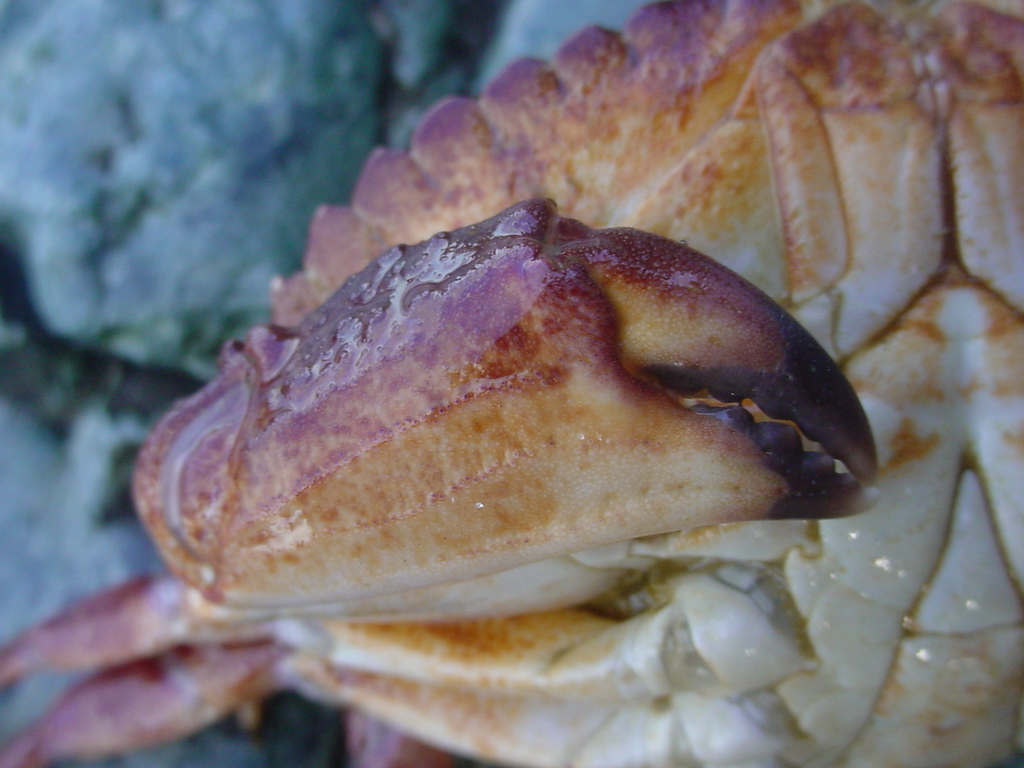
The tip of the dactyl on the chela of Cancer productus
is dark,
and the propodus has several tubercles, some of which are usually
arranged
in longitudinal lines.
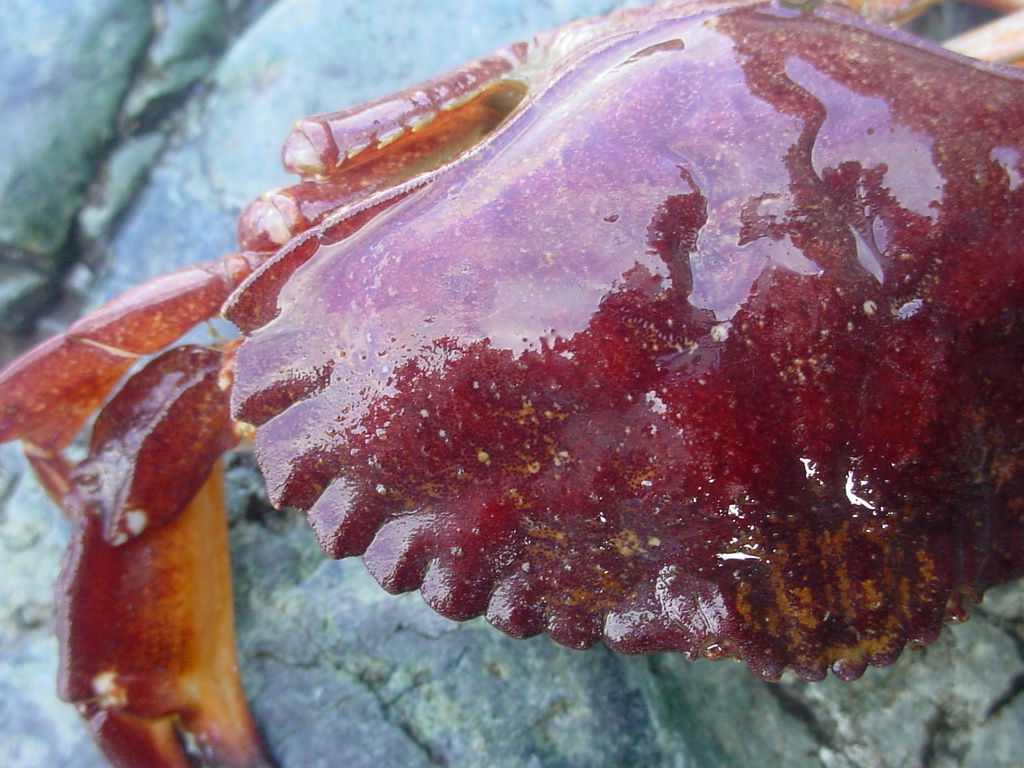
The carapace of Cancer productus has 10 teeth
lateral to the
eye. The carapace is widest at the 9th tooth.
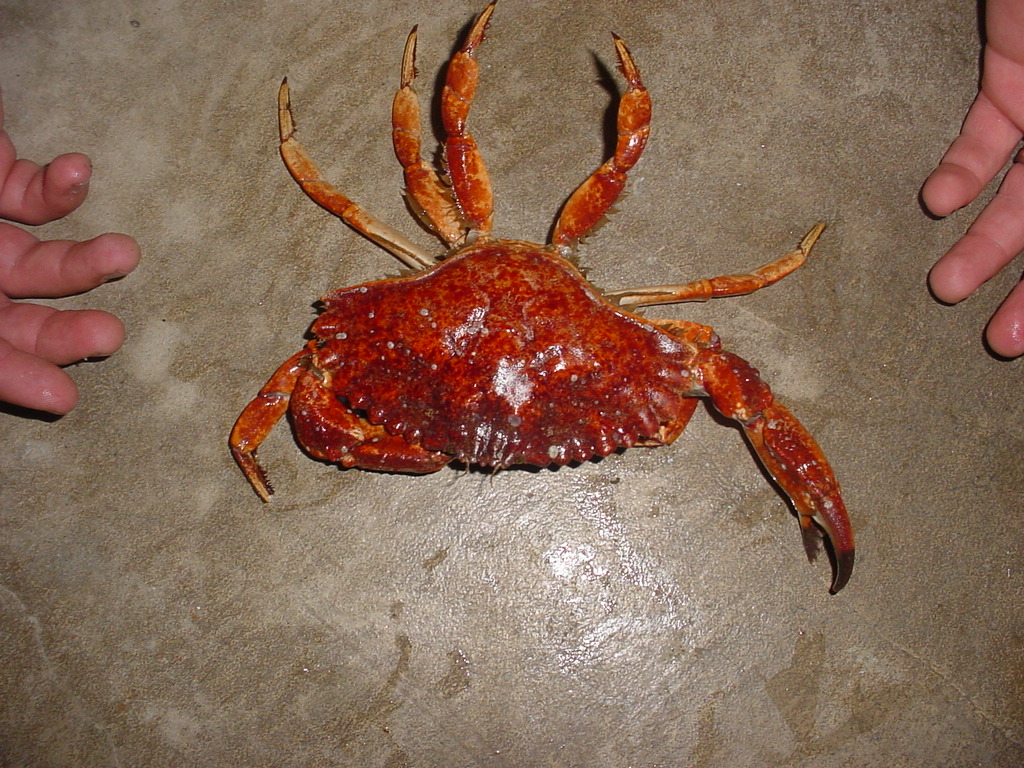
In this individual (live) one can see the fringes of setae on the legs.
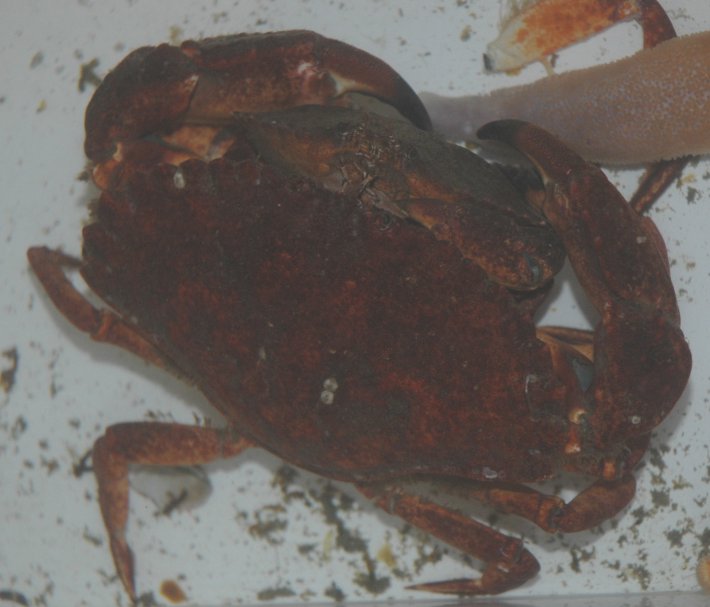
This large male is holding a smaller female, in preparation for her
molt.
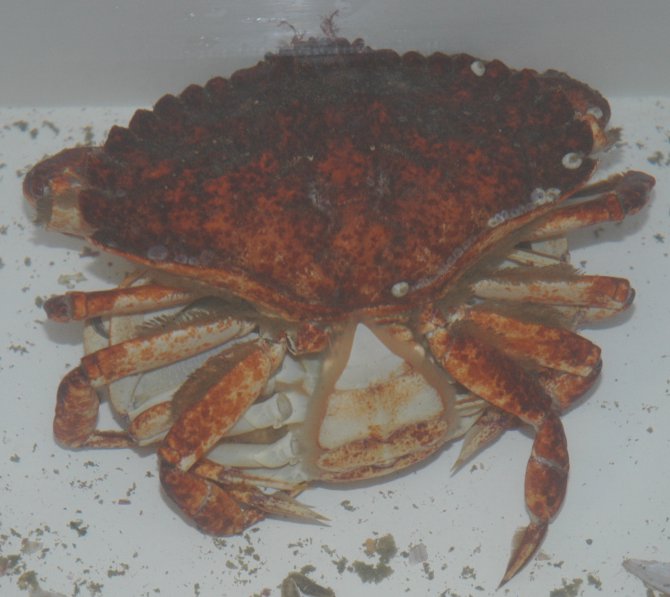
Mating takes place after the female has molted.
One of the color patterns possible on a Cancer
productus juvenile.
Authors and Editors of Page:
Dave Cowles (2005): Created original page

